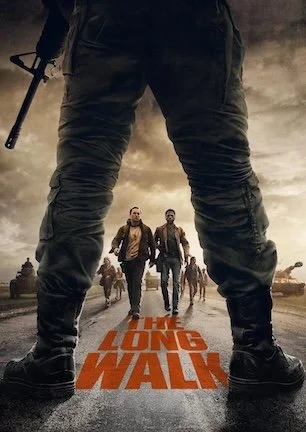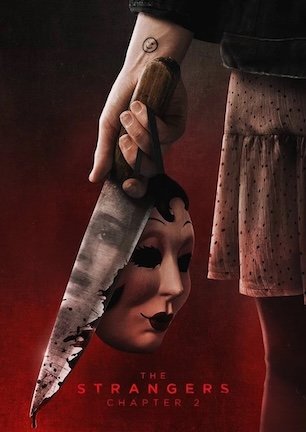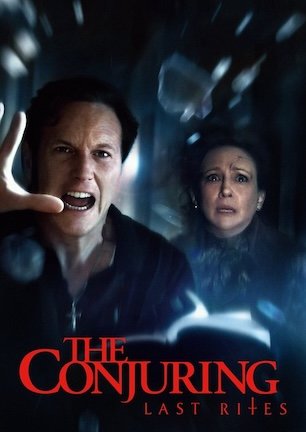Studio: Scream Factory
Director: Jamie Blanks
Writer: Donna Powers, Wayne Powers, Gretchen J. Berg, Aaron Harberts
Producer: Dylan Sellers
Stars: Denise Richards, David Boreanaz, Marley Shelton, Jessica Capshaw, Katherine Heigl, Hedy Burress, Jessica Cauffiel, Daniel Cosgrove, Johnny Whitworth
Review Score:
Special Features:
Summary:
A murderer masked as Cupid stalks five female friends who helped humiliate a bullied boy thirteen years earlier.
Review:
Had I written this review in 2001, when “Valentine” originally released, then right now you’d be reading routine complaints about the film following a fairly pedestrian formula, containing a laughably predictable twist, and being unfashionably late to the 1990s teen slasher resurgence party.
Except it’s currently 2019, when the movie would be old enough to vote as a college freshman. Somewhat inexplicably, hindsight now holds “Valentine” in kind enough regard that it earned the exhaustive Scream Factory Collector’s Edition treatment formerly reserved for hard to find titles and indisputable contemporary classics like “Creepshow” (review here) or “Day of the Dead.”
How does a previously mediocre-at-best thriller hold up under the forgiving light of nostalgia 18 years later? Surprisingly not too poorly.
I wouldn’t go so far as to say “Valentine” is better than you remember. But “Valentine” becomes more fun to watch as an enjoyable curiosity dated to a particular period in horror cinema’s history, as well as to see certain stars at various peaks in their respective popularity.
“Valentine” endears itself immediately with its heartbreakingly accurate flashback of a hopeless nerd braving a middle school gauntlet choked with humiliating rejections. From his thick plastic glasses to protruding teeth begging for braces, I looked just like Joel Palmer as beatdown magnet Jeremy Melton at that age. Also like Jeremy, I incubated unreasonable optimism that “maybe later” really meant “maybe later,” and wasn’t merely a method for future protagonist Kate to let the poor boy down easy.
Undeterred by unending insults, Jeremy finally receives a silent “I guess” when Dorothy the class “cow,” as unkind classmates call her, takes his hand for a dance. Jeremy probably never imagined that dance would lead to making out under the bleachers. He certainly never expected Dorothy, embarrassed to be discovered locking lips with a loser, to suddenly claim Jeremy attacked her. That’s all the excuse four bullies need to strip Jeremy naked before pummeling him in front of everyone at the Valentine’s Day dance.
13 years later, the ladies involved in the incident have grown into loose caricatures of some sort. Kate naturally became the good girl while unremorseful Dorothy rehabbed her image using daddy’s wealth. Of the trio that harshly teased Jeremy, studious Shelley remains preoccupied with med school, Paige turned cheekily promiscuous, and Lily laps up Paige’s leftovers as the sexpot’s sidekick.
In orbit around the women are men colored by varying degrees of scumbaggery. Conceited artist Max tries cornering Lily into an unwelcomed threesome. Gold-digging Campbell aims to charm considerable cash out of Dorothy’s eager-to-please purse. Even Kate’s otherwise acceptable ex Adam can’t completely commit to giving up booze to get back with Kate.
“Valentine” plays particularly well in the Me Too era by swinging a predominance of intelligence and empowerment onto the female side of the roster. Male stereotypes see themselves parodied as the movie uses its eponymous holiday to humorously exploit the Y chromosome’s most awful romantic behaviors. Awkward swagger, creepy hovering, toxic machismo, smarmy condescension, and dimwitted gift ideas are just a few subtle ways women winkingly stay in the know while the movie’s men are obliviously left in the cold.
Then again, the ladies aren’t entirely terrific either. Only one of them expresses any sympathy for the boy whose life they helped ruin as youngsters. It’s not as though their problematic personalities don’t deserve a humbling bite of retribution. Creative killings thus end up on the menu when a mysterious murderer masked as Cupid, who may be an adult Jeremy Melton, starts serving up just desserts.
“Valentine” arguably works better now because of how deliciously dated it is to the turn of the 21st century. Deformed by the growing pains that come from being unfortunately timed between a straight slasher boom and the rise of self-aware meta-horror, “Valentine” doesn’t lean enough toward one end to qualify as either. Its hodge-podge identity finds the film misguidedly turning tricks such as exploiting Maxim magazine appeal by shoehorning Katherine Heigl into a tank top and Denise Richards into a hot tub. This was par for the course in 2001, but seems quaint in retrospect as only part of what makes “Valentine” a vaguely amusing oddity.
The movie’s murder mystery is just as comically conceived. Chummed with nigh endless red herrings that are more red than herring, you’d think Kate and company live in a waking nightmare of the most horrible dating prospects imaginable.
Every woman has a stalker, troubled ex, abusive beau, or bizarre neighbor obsessing over her in a weird way. But the convenience of each murder’s orchestration carves out an even bigger piece of the contrivance cake. Nominally inspired by a Tom Savage novel, two tag teams of screenwriters join forces to total five people concocting content where someone’s death goes unnoticed because of a preplanned meeting or trip on more than one occasion. Let’s not even try wrapping logic around why Denise Richards takes a solo spa dip in the middle of a densely populated party.
“Valentine’s” big reveal also suffers from the Tony Danza principle, which was something seen more consistently around the time of the film’s debut. You know when a police procedural like “Law and Order” would feature a whodunit and the suspects included four nobodies and a “Special Guest Star” such as Tony Danza? Surprise surprise, the killer always turned out to be Tony Danza.
When you similarly line up potential perpetrators for “Valentine’s” homicides, there’s only one possible person Cupid could be. Hint: it’s the well-known celebrity who was on a super successful TV series at the same time, not one of the other actors whose names you haven’t heard before or since.
Given everything going on in “Valentine,” and there is a lot going on considering all of the suspects and subplots, several scenes move with surprising slowness. Such stalling usually arrives in the form of lengthy sequences of silently searching for a clue or hiding from the killer.
When you subtract everything above, yet add the appeal of its retroactively serendipitous silliness, “Valentine” evens out as a perfectly serviceable slasher made palatable by the presence of pleasant actors in engaging early roles (why didn’t Marley Shelton break as big as the rest of the cast?). Snickers don’t always receive invitations. The mystery has a hard time maintaining intrigue. Fortunately for “Valentine,” it’s not 2001 anymore. That means we can take the movie in good humor it didn’t deserve then, but which makes for a more enjoyable experience now.
Review Score: 60
Scream Factory Collector’s Edition: Releases like this are what makes Scream Factory exceptional, not simply great, as the leading distributor of feature-packed home video horror. Any company would jump at the chance to do deep dives on marquee titles like “Dawn of the Dead” or what have you. But who else puts Herculean effort into marginal movies like “Valentine?” Lower-tiered films are much more enjoyable when accompanied by a plethora of bonuses, and such complete packages inspire ongoing appreciation for previously unappreciated productions. Oh, not that it matters since you’ll want to display Devon Whitehead’s killer new illustrated art anyway, but purists can of course reverse the case cover to the original poster image instead.
Audio Commentary with Director Jamie Blanks: As I do in order to get through more podcasts, I often listen to audio commentaries at 1.5x speed. When you’re trying to publish complete coverage of Blu-ray bonuses in a timely fashion, it just isn’t practical to repeatedly watch something normally to accommodate multiple commentaries. This has never presented a problem until “Valentine.” Jamie Blanks packs in so many technical tidbits at such a rapid pace that it’s impossible to process at a faster speed. That’s a testament to how much trivia Blanks has to offer, which isn’t commonplace for solo commentary tracks. This was clearly recorded close to the film’s 2001 release, or else he’s working from in-depth notes, because Blanks spouts endless information with a fresh memory he doesn’t have on the more recent recording. He even recalls editing between take two and take four of a particular scene. I don’t know many other filmmakers who can remember their movies down to such details.
NEW Audio Commentary with Director Jamie Blanks and Filmmaker Don Coscarelli, Moderated by Author Peter Bracke: I’m a fan of commentaries that include people who weren’t involved in the production. Since they don’t have a direct personal investment, they tend to inject relaxed vibes of casual conversation. In this case, “Phantasm” mastermind Don Coscarelli, who simply happens to be friends with Jamie Blanks, joins the “Valentine” director for an easy-going chat while watching the film. It makes for a mood perfectly suited to fix a cocktail and settle in as a fly on their wall.
I’m also not normally opposed to commentary moderators, because I’ve heard more than a few alternative tracks go off the rails when distracted participants lose their direction. Here however, Peter Bracke weirdly asks questions that Jamie Blanks already addressed in his previous commentary. “Is that a real location or a set that you built?” “How many shooting days were there?” Wouldn’t you want to do basic research on the other commentary before sitting down to record this one?
Perhaps sensing that Coscarelli and Blanks aren’t in any danger of losing interest in what’s happening onscreen, Bracke rather rapidly takes a backseat, allowing the two directors to shoot the breeze in an intimate manner. Like Blanks’ earlier audio accompaniment, this commentary is particularly interesting for filmmakers who want to hear what goes into working around a celebrity’s schedule, discovering one of your locations contains asbestos, and other unforeseen incidents that necessitate improvisational creativity. You might get waylaid by those repeated sidetracks about what’s a real place versus what’s a stage. But there’s also fun stuff concerning “Valentine’s” connections to the “Hellraiser” franchise and other miscellaneous minutiae about the movie’s making.
NEW “Thrill of the Drill” – An Interview with Actress Denise Richards: Denise Richards has probably done so many repetitive junkets over her career that it’s hard to break from “sell my movie” mode, even in a retrospective interview. Richards thus spends much of her quick nine minutes broadly generalizing about her positive experience working on “Valentine” before actually getting into some specifics. It’s still nice to see that Richards regards the film fondly, i.e. it wasn’t “just another job,” which can be the case for stars like her who have worked a lot. Noticeably odd audio edits add a couple of technical kinks to this mostly cursory segment.
NEW “The Final Girl” – An Interview with Actress Marley Shelton: We speak often about ageless celebrities, but if no one knew better, I could be convinced Marley Shelton’s Q&A was shot at the same time as the feature, not in 2018. Remarkably looking no different now than she did then, Shelton gives fans pretty much everything they could ask for from 13 minutes of catching up: fond recollections, unusual memories, and interesting insight into her attachment to the genre in general.
NEW “Shot Through the Heart” – An Interview with Actress Jessica Cauffiel: If you weren’t a fan of Jessica Cauffiel before, you will be after experiencing her effervescence, animation, and genuine enthusiasm while talking at length about “Valentine.” Cauffiel goes into good stuff about being a desperate young actress, how she and Jamie Blanks basically created her character during her audition, what went into shooting Lily’s memorable death scene, even hanging out with David Boreanaz at Playboy parties back in the day. Cauffiel clearly could have done her own complete commentary track and it no doubt would have been as enjoyable as these 23 minutes.
NEW “Writing Valentine” – An Interview with Co-Writers Gretchen J. Berg and Aaron Harberts: Early on, this looked like it could be trouble. Gretchen J. Berg and Aaron Harberts begin somewhat stiffly, offering tidbits relevant only to whoever might be interested in their bios or what they wore to Warner Bros. meetings. Then they start speaking about how they changed Donna and Wayne Powers’ original draft and the climate changes considerably. After dishing some good “what almost was” trivia, fun floodgates open wider. Berg and Harberts’ personalities come out to play the more they reminisce. They keep digging deeper into how they developed the characters while discussing gender dynamics and other themes too. More disciplined direction or editing might have steered these 64 minutes away from meandering moments. But the interview does come around to heightening its value after the two writers fully heat up.
NEW “Editing Valentine” – An Interview with Editor Steve Mirkovich: John Carpenter fans will be pleased to hear Steve Mirkovich’s brief remembrances of starting out on “Big Trouble in Little China,” “Prince of Darkness,” and editing “They Live’s” infamous alley fight sequence. I wonder how much enjoyment people who aren’t cinema tech-heads squeeze out of segments like these. But as one such person, I find Mirkovich’s memories and philosophies fascinating. These 27 minutes present a balanced profile of Mirkovich’s regular work routine, the process of collaborating with director Jamie Blanks, pacing “Valentine’s” death scenes, and thoughts on constructing scares to evolve in step with an audience’s attention span.
NEW “Scoring Valentine” – An Interview with Composer Don Davis: While listening to Don Davis’ answers, I kept wondering what unheard questions were being asked to inspire his random responses. I couldn’t figure any of them out. It’s not necessarily that Davis isn’t an engaging interviewee. His reasoning behind the tinkling piano leitmotif for Jeremy Melton is particularly interesting. It’s just that Davis mostly offers matter-of-fact generalizations. Maybe the issue is that “Valentine” went too smoothly as a contract job. Without any notable challenges or anecdotes to speak of, there isn’t any colored laundry, dirty or otherwise, to air in these 11 minutes.
NEW Never-Before-Seen Behind-the-Scenes Footage from Director Jamie Blanks’ Personal Archive: I don’t know what criteria went into choosing these 120 minutes from 10 available hours of behind-the-scenes footage. What’s included isn’t always exciting, and lacks narrative context since the content comes from all over the 42-day shoot. Nevertheless, you’ll be treated to various looong looks at set decoration, stunt staging, multiple takes, David Boreanaz being silly, other assorted good times as cast and crew let loose between takes, and plenty of dull downtime too.
Vintage “Making Of” Featurette Featuring Cast and Crew: Not really a ‘Making Of,’ this eight-minute puff piece is more of an inessential ‘Entertainment Tonight’-style promo.
Extended Interviews and Behind-the-Scenes Footage from the Electronic Press Kit: Nowadays, studio PR puts talent and press people on a continuous carousel of revolving interviews to generate similar content for individual outlets. In 2001, it was more common to produce generic interviews and let the press pull quotes or clips as needed. So here you have David Boreanaz, Denise Richards, Marley Shelton, Jessica Capshaw, Jessica Cauffiel, and Jamie Blanks each contributing a couple of quick, commercial-ready sound bites while the bulk of this 17-minute piece fills out with BTS snippets.
Deleted Scenes Including Extended Death Scenes: MPAA meddling forced Jamie Blanks to snip several of “Valentine’s” gorier kills. Here you can see them in their uncut glory, albeit in unprocessed standard definition. Better than that though is the inclusion of several completely cut scenes including young Jeremy Melton catching his mother in coitus and the four friends doing rooftop shots in Shelley’s honor. This segment runs just short of nine minutes.
Club Reel Music Video: While it would have been cooler, and funnier, if “Saturday Night Live’s” parody commercial for the “Valentine” soundtrack were included instead, what we have here is a clip show accompanying Orgy’s song Opticon.
Additional Extras: If two and a half hours of all-new interviews plus all of the other Special Features somehow haven’t quenched your thirst for all things “Valentine,” you also have the usual collection of five TV spots, a teaser trailer, the theatrical trailer, and a still gallery.
Hidden Easter Egg? – The back of the box doesn’t repeat this, but the Blu-ray’s Amazon listing advertises a “Hidden Easter Egg” as being among the Special Features. I poked around each menu pressing every button possible and came up with nada. I’m writing this when the disc hasn’t been available long, so if the Easter egg’s identity has been revealed elsewhere, I don’t yet know about it. If you do, I’d love to hear what it is.







It assumes everyone watching must be a dimwit too dense to understand how the most basic storytelling concepts work.